Bulbs
Flower Basics
Flower Beds & Specialty Gardens
Flower Garden
Garden Furniture
Garden Gnomes
Garden Seeds
Garden Sheds
Garden Statues
Garden Tools & Supplies
Gardening Basics
Green & Organic
Groundcovers & Vines
Growing Annuals
Growing Basil
Growing Beans
Growing Berries
Growing Blueberries
Growing Cactus
Growing Corn
Growing Cotton
Growing Edibles
Growing Flowers
Growing Garlic
Growing Grapes
Growing Grass
Growing Herbs
Growing Jasmine
Growing Mint
Growing Mushrooms
Orchids
Growing Peanuts
Growing Perennials
Growing Plants
Growing Rosemary
Growing Roses
Growing Strawberries
Growing Sunflowers
Growing Thyme
Growing Tomatoes
Growing Tulips
Growing Vegetables
Herb Basics
Herb Garden
Indoor Growing
Landscaping Basics
Landscaping Patios
Landscaping Plants
Landscaping Shrubs
Landscaping Trees
Landscaping Walks & Pathways
Lawn Basics
Lawn Maintenance
Lawn Mowers
Lawn Ornaments
Lawn Planting
Lawn Tools
Outdoor Growing
Overall Landscape Planning
Pests, Weeds & Problems
Plant Basics
Rock Garden
Rose Garden
Shrubs
Soil
Specialty Gardens
Trees
Vegetable Garden
Yard Maintenance
How to Grow Moss for Your Garden
How to Grow Moss for Your Garden. Some homeowners cringe at the presence of mosses (_Bryophyta_ group) among grasses and gardens, but, for moss lovers, the sight calls for celebration. Inspired by soothing Japanese gardens and historic European moss lawns, moss gardeners surrender space and encourage mosses to move in. Mosses encompass many plant...
Some homeowners cringe at the presence of mosses (Bryophyta group) among grasses and gardens, but, for moss lovers, the sight calls for celebration. Inspired by soothing Japanese gardens and historic European moss lawns, moss gardeners surrender space and encourage mosses to move in. Mosses encompass many plant families and number in the thousands of species, some native to every region. By balancing natives with simple moss basics, you can grow your own moss -- outdoors or in.
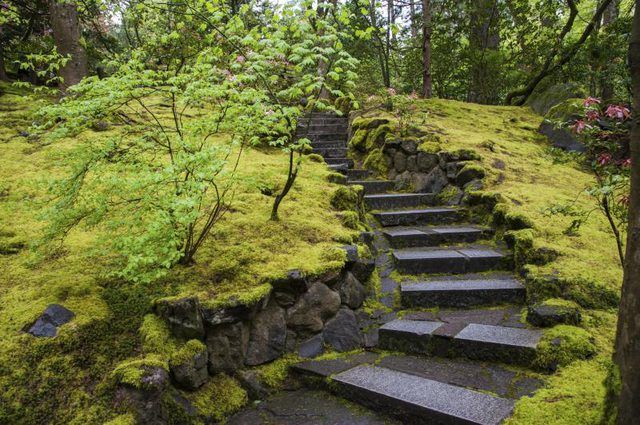
Besides their rich colors and velvety textures, mosses stand out from other plants in basic ways. True mosses are primitive plant forms without roots and vascular systems. Unlike most plants, mosses soak in moisture and nutrients from above and draw them from below, like candlewicks, while held in place by threadlike structures known as rhizoids.
Despite common perceptions, mosses don't crowd out lawn grasses; instead, they move into challenging areas where grasses failed. Nurturing moss-preferred conditions gives these lush native plants an advantage over others.
Some specialty nurseries offer true mosses, but most garden centers rarely carry them. The perennial ground covers at these places are mosses in common name only. For true moss gardens, look beyond these perennials to mosses that naturally occur in your area.
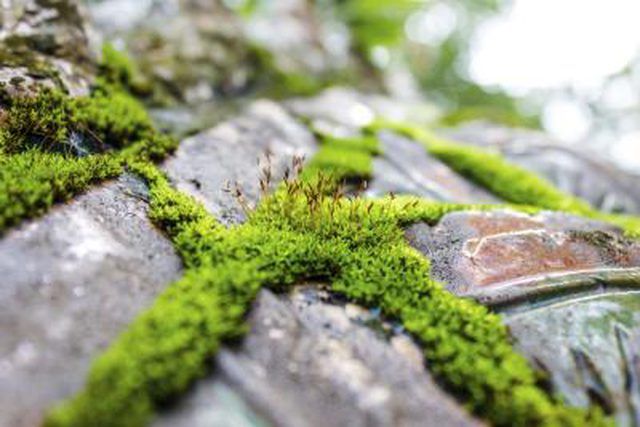
Mosses excel in conditions that many other plants hate. Consistently wet, poorly drained, compacted, acidic soil is a moss-lover's dream. Some mosses tolerate sun with plentiful moisture, and some desert mosses tolerate extended drought, but most common mosses prefer wet, medium-to-dense shade, where few plants compete.
If moss already grows in your lawn or garden, cultivating more comes easily. Let moss spread on its own or remove grass and other plants to speed the process. If you're short on natural moss, simple steps encourage its growth.
Mosses prefer acidic soil with a pH near 5.5 or lower -- a range where lawn grasses and weeds struggle. If soil testing shows higher pH levels, follow test recommendations to lower soil pH. For example, broadcast 1 pound of elemental sulfur per 100 square feet to lower soil pH by 1.0 unit. Wear protective clothing, including gloves and safety eyewear, and work the sulfur into the soil.
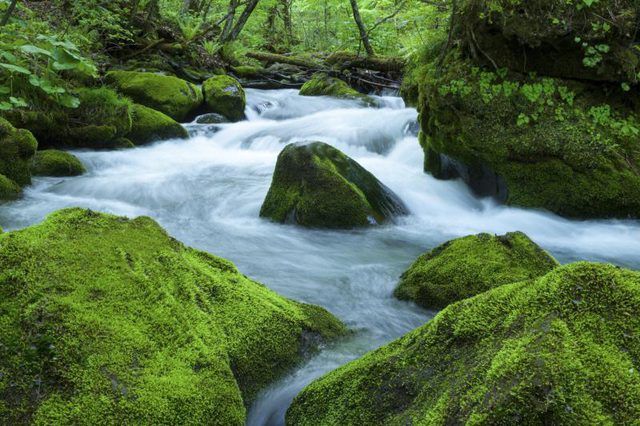
Many mosses transplant easily from their natural locations. Some mosses lift like woodland rugs and relocate like sod. As with all native plants, mosses may be protected in some areas. Know your local laws, and never gather moss from public or private lands without permission.
When scouting out moss for your garden, look for conditions that match your own. Identifying mosses can be difficult -- even for moss experts -- so don't worry about species. Mosses from wet, low-lying areas require wetter garden sites than mosses from tree stumps or drier, higher areas. Matching natural habitats translates to healthy moss and less maintenance.
Mosses have two basic forms: carpet types and mounding types. Pieces 6 to 8 inches across transplant easiest because they dry out more slowly, but any size can work. Insert a spade or long knife under the moss, and lift it gently. Place the pieces where you want them, and firmly press them into place. Move moss during your region's rainy season, when natural precipitation helps keep it moist.
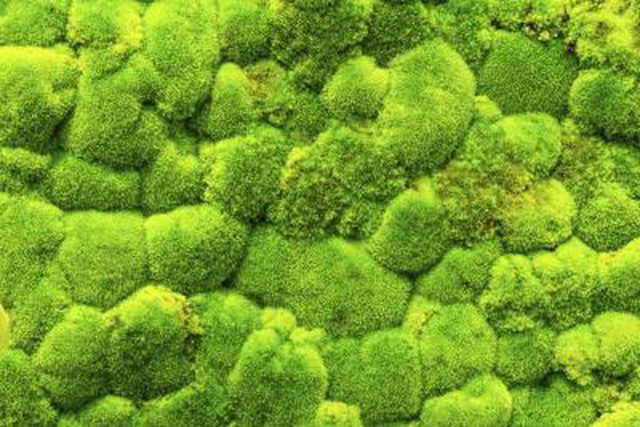
Newly transplanted mosses need regular watering through their first year of establishment. Water them any time the soil dries out, including winter months. Mosses are very sensitive to fertilizers, which also encourage competing grass and weeds. Keep soil pH in proper ranges, and avoid extra fertilizers.
Naturally occurring mosses need very little maintenance. Keep moss gardens free of fallen leaves and other debris that block light and smother mosses. Rake leaves gently or use a leaf blower. If tiny tree seedlings or other plants appear, cut them off at the soil line. Pulling out their roots can dislodge moss.
Mosses are tough and resilient, but they don't tolerate heavy foot traffic. Thick moss cushions take several years to establish and spread. Strategic flagstone paths or pavers protect moss from damage.
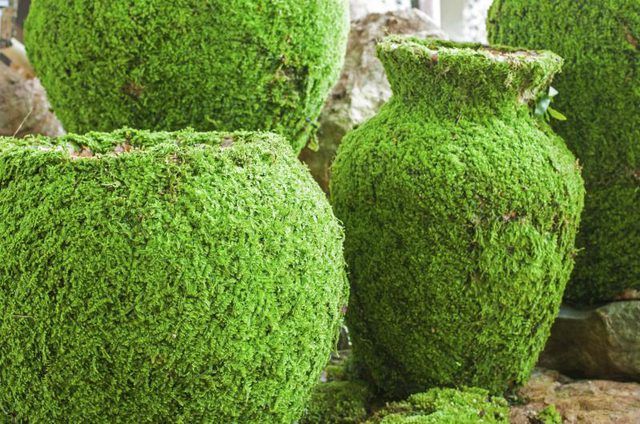
Mosses flourish indoors when they have proper conditions. The same basic care rules apply, and lower indoor light levels are welcome. Tuck mosses in around forced bulbs, let them blanket container soils, or create miniature moss gardens or terrariums for indoors.
Mosses are sensitive to pollution. Chemicals and softening salts in tap water trigger those sensitivities. Water indoor mosses with reverse-osmosis water, distilled water or rainwater whenever possible. At a minimum, let tap water sit overnight.
Indoors mosses grow on the same foundations that outdoor mosses handle, including stones, twigs, sand and soil. When mosses lack water, colors dull and pleasant textures diminish. Mist and water indoor mosses regularly to keep them vibrant and soft. Move them back outside whenever you desire.
